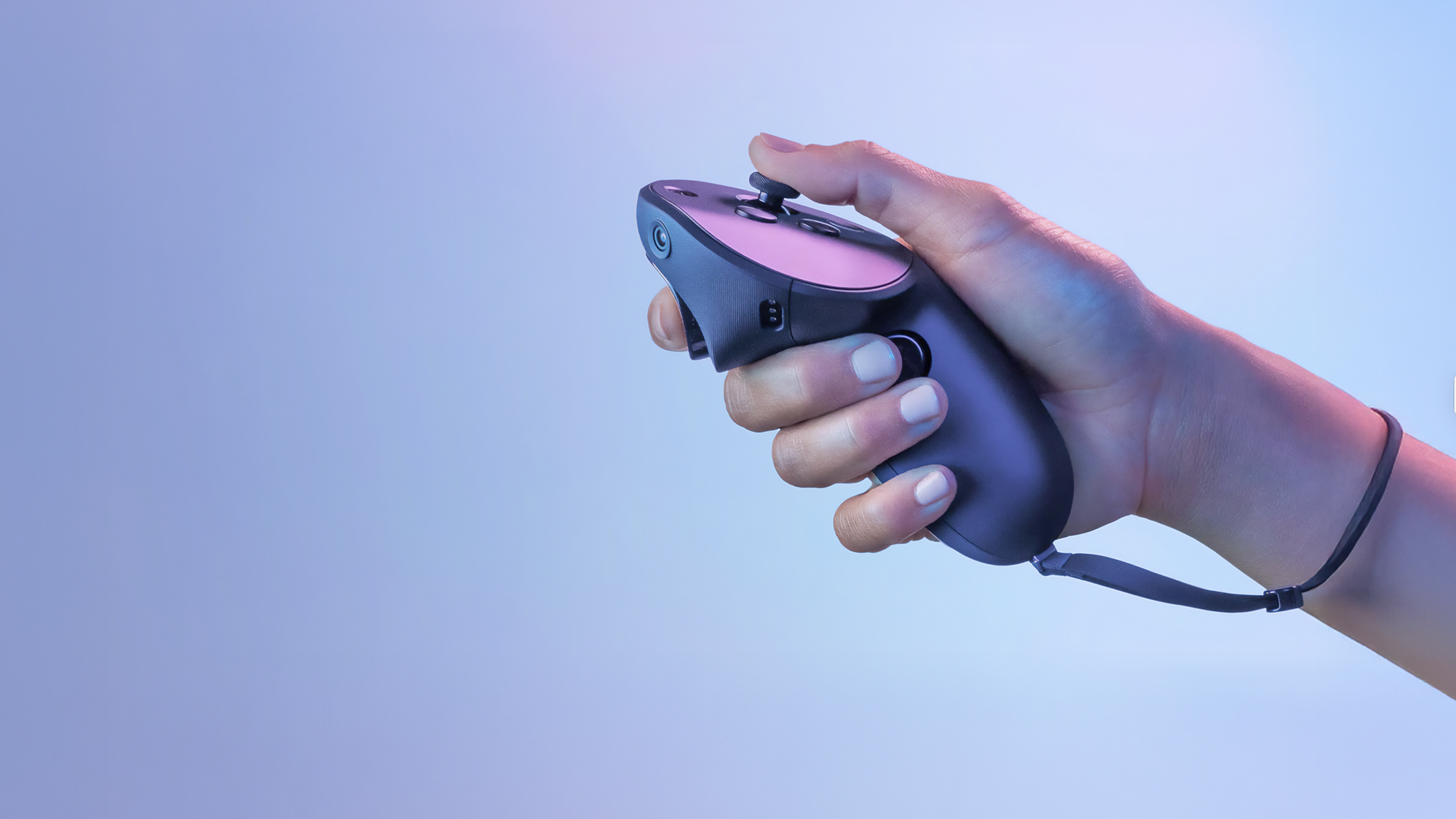QUEST PRO CONTROLLER
Less Virtual. More Reality
THE ASK
Closely collaborate with Meta’s controller team as their dedicated R&D partner to accelerate the Quest Pro Series launch. Explore and develop two new interaction features - thumb pressure sensing, and an integrated stylus for scribing, combined with an innovative lanyard connection - while conducting extensive user research and testing to validate designs and inform critical product decisions.
-
Our cross-functional team spearheaded the research, exploration, design, and engineering of two touch-sensing controller interactions. Thanks to our collaborative efforts, Meta successfully met critical delivery and launch milestones for their flagship controller - the Quest Pro - ensuring a timely and successful product rollout.
-
What began as a three-month engineering project evolved into a three-year multidisciplinary partnership, driven by our human-centered design approach, UX research expertise, and rapid prototyping and usability testing capabilities.
-
As Design and Project Lead, I defined the project strategy, assembled and managed a multidisciplinary team, collaborated with the client, led UX research and usability testing, provided concept ideation, and guided design and engineering decisions informed by newly discovered user needs.

APPROACH
We rapidly built multiple physical models and prototypes to test potential interactions with users, to identify key metrics that drive positive physical interaction experiences. Insights gained from experience prototypes were invaluable in guiding design and engineering decisions, particularly when balancing user experience with integration complexity.
01 Pressure Sensitive Thumb Interaction
Our Ask: Create an unobtrusive pressure-sensing thumb affordance that allows users to manipulate smaller objects with greater congruency while aligning with the existing design language. Design several novel options to test against the client’s leading direction - a minimal static surface void of tactile and visual affordances.
Combining Force, Haptics, and Visual Feedback for a More Congruent Experience
Thumb Pressure Affordance | Design Exploration
How essential is the thumb's ability to move - for VR congruency - as it closes on an object and applies pressure? Explore multiple moving and tactile affordances to test against a static (non-moving) surface affordance.
Three Concepts (A,G,C) Selected for Refinement & Prototyping
We built functional prototypes to test three leading concepts. The preferred concept was selected to test with users against a static affordance in a VR demo.
Sensor Evaluation and Mechanical Design
Our engineering team conducted extensive testing of various sensors and developed multiple mechanical solutions, exploring different combinations to assess reliability, accuracy, and manufacturability.
Experience Prototyping for Testing & Experimentation
We built functional prototypes to test haptic design, thumb pressure affordance concepts, and sensor integration.
User Testing Concepts In VR
We built two prototypes of the final concept to test user preferences for different force and travel profiles when gripping and applying pressure versus a static, non-moving surface.
Testing Results | A Moving Affordance is Clearly Preferred
We conducted a usability study with 11 participants, running four task-based VR tests to assess controller performance and preferences. Each test measured success rate, completion time, and error rate for quantitative benchmarks.
02 Add a Scribing Stylus & Integrated Lanyard
Our Ask: Design a new scribing stylus affordance that allows users to write with the controller and integrate a tethered lanyard in the same location that does not interfere with the act of scribing.
How Will Users Scribe with a Controller…
We identified key physical constraints to overcome in order to create an optimal scribing experience for a heavy, bulky controller.
Rapid Experience Prototyping
We developed multiple writing experiments to test with users, aiming to identify key design metrics that influence comfort and accuracy.
Design Ideation | Scribing With the Lanyard
We were asked to explore concepts that integrated the lanyard with the stylus tip to preserve the stylus affordance without requiring swapping. Additionally, we were asked to consider connecting to the controller via a USB-C port
Concept Refinement | Scribing With the Lanyard
Two primary directions were identified for further design and engineering exploration: 4) Eject button on Housing, and 3) Eject button built into the stylus tip.
Stylus Tip Design: Without Lanyard Integration
We explored two stylus tracks simultaneously: combining lanyard and stylus tip, and a swappable stylus with lanyard. For the swappable version - without lanyard integration - we considered varying levels of tip integration with the controller housing.
Final Direction | Stylus Tip Without Lanyard Integrated
We selected three directions for further refinement, testing, and validation for experience and manufacturability.
Final Concept | 01 Quarter-Turn
The swappable pressure-sensitive tip and lanyard were chosen over integrated options to avoid engineering delays and keep the launch on schedule. The quarter-turn concept offered a novel removal interaction.
Value Delivered
We designed, tested, and supported the design-for-manufacturing of two novel interactions on the Quest Pro Controller.
Our cross-functional team spearheaded the research, exploration, design, and engineering of two touch-sensing controller interactions. Thanks to our collaborative efforts, Meta successfully met critical delivery and launch milestones for their flagship controller - the Quest Pro - ensuring a timely and successful product rollout.
































